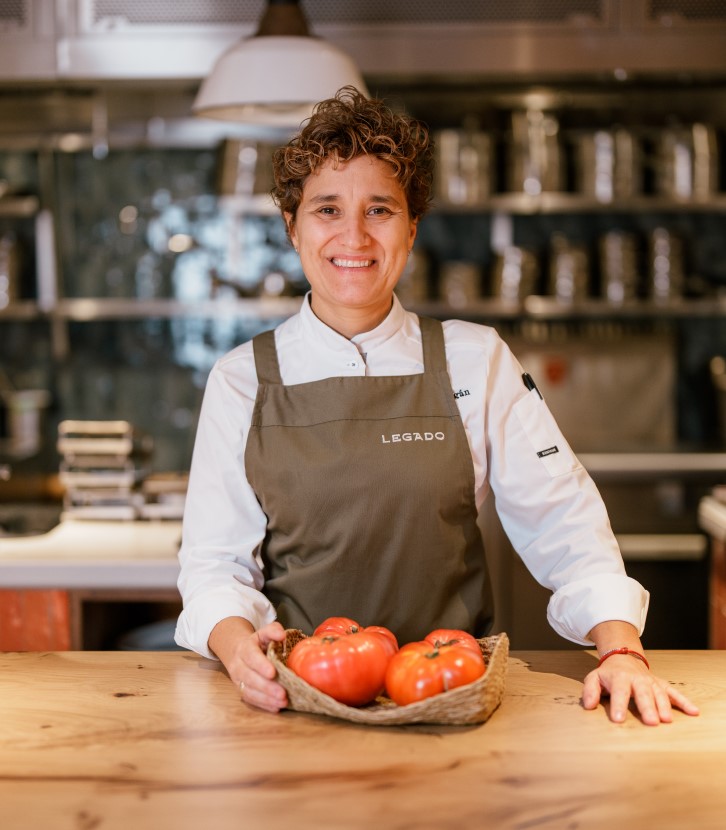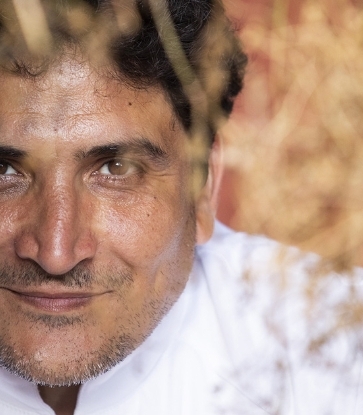Korean barbecue isn’t just a meal for Louis Han, chef-owner of one-MICHELIN-Starred restaurant NAE:UM along the vibrant Telok Ayer street in Singapore — it’s a cherished part of his childhood and a cornerstone of Korean culture.
“In Korean culture, whenever we want to celebrate a special occasion or treat a friend, we say ‘I’ll treat you to barbecue!” he explains with a fond smile. Growing up, pork belly was his household favourite due to its affordability and delicious flavour, which holds a historical significance in South Korea. For the older generation, meat was rare to come by, hence food became a way to express love and celebration in Korean families.

Han's decision to open a more casual Korean grill restaurant along Keong Saik road — GU:UM (which means "to grill" in Korean) — stemmed from the overwhelmingly positive reception of NAE:UM’s barbecue-themed menu. “Our guests loved Front Yard Barbecue, episode 5 of our menu,” Han reflects. “To our guests, the flavours and ingredients are comforting and familiar yet creatively elevated.”
Inspired by this feedback and contemplating the concept of a more casual dining project, the team at NAE:UM combined these insights to create a unique dining experience — a Korean grill restaurant without the traditional table-side grills helmed by servers. “We deliberated on how to differentiate ourselves from other Korean barbecue venues and chose to stick with our strengths.” In their contemporary Korean grill restaurant, expert chefs from NAE:UM grill meat in an open kitchen, creating a playful, informal ambiance that blends traditional Korean barbecue flavours with creative fusion elements.

The Essential Elements of Korean Barbecue
Central to Korean barbecue is the art of making ssam.
“The ritual of creating ssam is crucial,” Han elaborates, describing the tradition of wrapping grilled meat in lettuce or perilla leaves with various condiments. “You have to create a ssam that’s full of flavours and not be afraid to take it all in one bite. It’s about experiencing all the textures, mouthfeels, and flavour combinations in a single mouthful.”
Han shares his ideal ssam combination:
“How I would construct my ssam? Lettuce outside, a piece of perilla leaf, a dip of ssamjang, one slice of pickled garlic, green chilli, a heap of whatever meat you’re grilling, leek and onion salad —and put it in your mouth, all in one!”
For enthusiasts eager to recreate the Korean grill experience at home, Han emphasises that authenticity begins with key ingredients.
“Kimchi is indispensable,” he declares. “Its tanginess perfectly complements the richness of grilled meats.” One can either put the kimchi on the grill or eat it fresh. Fresh vegetables like perilla leaves, lettuce, and pickles are essential, alongside quality meats sourced from trusted local butchers.

The best memories that Han had of Korean barbecue was grilling in his front yard, with vegetables directly farmed from his family's garden. Ssamjang, a savoury dipping sauce, is a must-have that enhances the flavours of the meat and ties everything together. However, to level up your Korean barbecue experience even more with sauces, Han shares two of his favourite barbecue sauce recipes to pair with your choice of meat so you can try it at home.
“There’s no need for Korean barbecue to be so fancy, as it is always a communal meal where you’re comfortable and with the right company.”
Louis Han’s No-Fail Spicy Korean BBQ Sauce (Gochujang Marinade)
Pairs well with: pork, duck, chicken, or any meat with a robust flavour that complements spice.Ingredients:
· 120g gochujang (Korean red chilli paste)
· 20g garlic
· 10g spring onion
· 30g onion
· 100g corn syrup
· 20g brown sugar
· 70g soy
· 30g sake
· Pepper to taste
Preparation:
1. Blend garlic and onion thoroughly in a blender.
2. Roughly chop the spring onion.
3. Combine all ingredients in a mixing bowl, then add pepper to taste.
4. Allow the marinade to sit in the chiller for 3 hours.
Louis Han’s No-Fail Non-Spicy Korean BBQ Sauce (Soy Marinade)
Pairs well with: beef and pork, enhancing their natural flavours.Ingredients:
· 100g soy sauce
· 40g onion
· 70g pear juice
· 30g corn syrup
· 20g sugar
· 30g garlic
· 15g sesame oil
· 10g sesame seed
· Pepper to taste
Preparation:
1. Blend onion with pear juice in a blender.
2. Finely chop garlic.
3. Combine all ingredients in a mixing bowl (except sesame oil).
4. Mix well, then add sesame oil and pepper to taste.

A final tip for Korean barbecue first-timers from Han: a complete experience would be washing down your ssam with a shot of alcohol. “My personal favourite is the soju bomb, but somaek (soju and beer) works too!”

Reflecting on the evolution of Korean barbecue, Han acknowledges the increasing competition and growing expertise in grilling techniques and meat aging. To address this, their contemporary Korean grill restaurant, GU:UM, aims to preserve core traditions, while incorporating fusion elements to elevate the dining experience.
As Korean cuisine gains global recognition, showcasing the diverse facets of hansik (traditional Korean food) remains a driving force for Han, ensuring its rich cultural heritage stays vibrant and accessible worldwide. “While it’s important to champion Korean cuisine around the world, we must remember our roots and not lose the originality and essence of Korean cuisine.”
Header image is by John Heng.


















